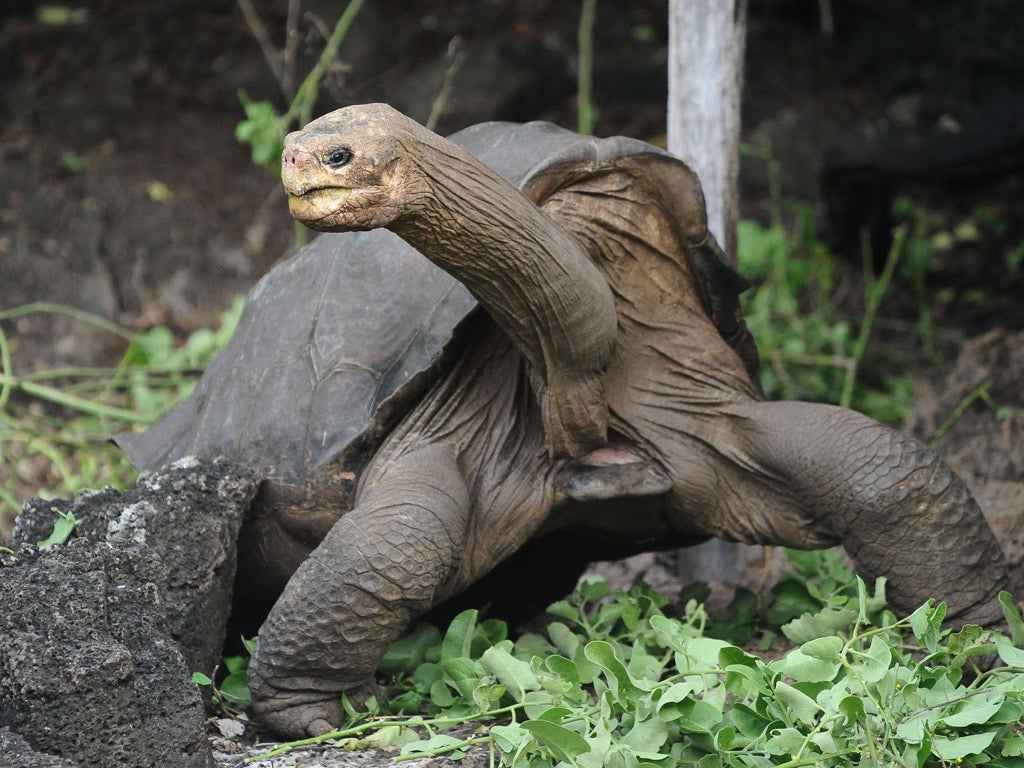It's tough being an emblem. Even before Lonesome George – assumed to be the very, very last member of the variety of giant tortoise known as Chelonoidis nigra abingdoni – died last weekend, his sub-species was already technically extinct. The absence of compatible lady tortoises had seen to that. Yet instead of being allowed to spend the last of his 100-odd years pottering around his home island of Pinta in the Galápagos archipelago, he spent them in a corral on nearby Santa Cruz, where tourists bemoaned his awful fate and took pictures. Click, click, click.
A few years ago, I was one of those tourists, and dutifully took some photographs of my own. Lonesome George obliged me with a weary crank of his long neck, a testudine testament, it seemed, to the rapacious, ecologically awful demands of man.
After all, the reason his kind had been so reduced was that, for years, new arrivals had been ignorant of the stresses a delicate ecosystem was being subjected to. Lost in the Pacific, the islands had long stood remote from outside interference. But in 1535 the first sailors appeared, and from then on we managed to mess things up good and proper.
Even Charles Darwin, who based his theory of evolution in part on his discoveries here, wasn't blameless. According to his Journal of Researches, during his visit of 1835 he discovered that "the breastplate roasted ... is very good; and the young tortoises make excellent soup".
Yet, to my mind, if Lonesome George was emblematic of anything, it was of the power of mankind to learn from its mistakes. The objectives of Santa Cruz's Charles Darwin Research Station, where George plodded around his pen, are focused around captive breeding and conservation. This more enlightened approach means that baby tortoise consommé has long been off the menu.
Responsible tourism should play its part, too. On the face of it, conservation and tourism are uneasy bedfellows. Unesco's decision in 2007 to put the islands on its World Heritage in Danger list cited the threats posed by invasive species, unbridled tourism and overfishing.
But without the spotlight – and funds – that tourism brings, the Ecuadorian government would almost certainly have done less to manage illegal fishing and the pressures of human immigration on the islands in order to restore World Heritage status in 2009.
The UK-based Galápagos Conservation Trust (savegala pagos.org), which campaigns to raise awareness about the region, says that "the right kind of tourism can help and has become an important contribution towards conservation efforts in Galápagos".
New National Park entry fees are due to be put in place this year to encourage longer, more thoughtful cruise itineraries. And landings on the islands are carefully controlled. During my trip, we were allowed only brief access to specific sites, always in the company of a guide.
With 185,000 visitors in 2011, Galápagos will never be the pristine wilderness it once was. The hope is that responsible tourism can play its part in ensuring that Lonesome George becomes an emblem of optimism rather than tragedy.
Subscribe to Independent Premium to bookmark this article
Want to bookmark your favourite articles and stories to read or reference later? Start your Independent Premium subscription today.


Join our commenting forum
Join thought-provoking conversations, follow other Independent readers and see their replies